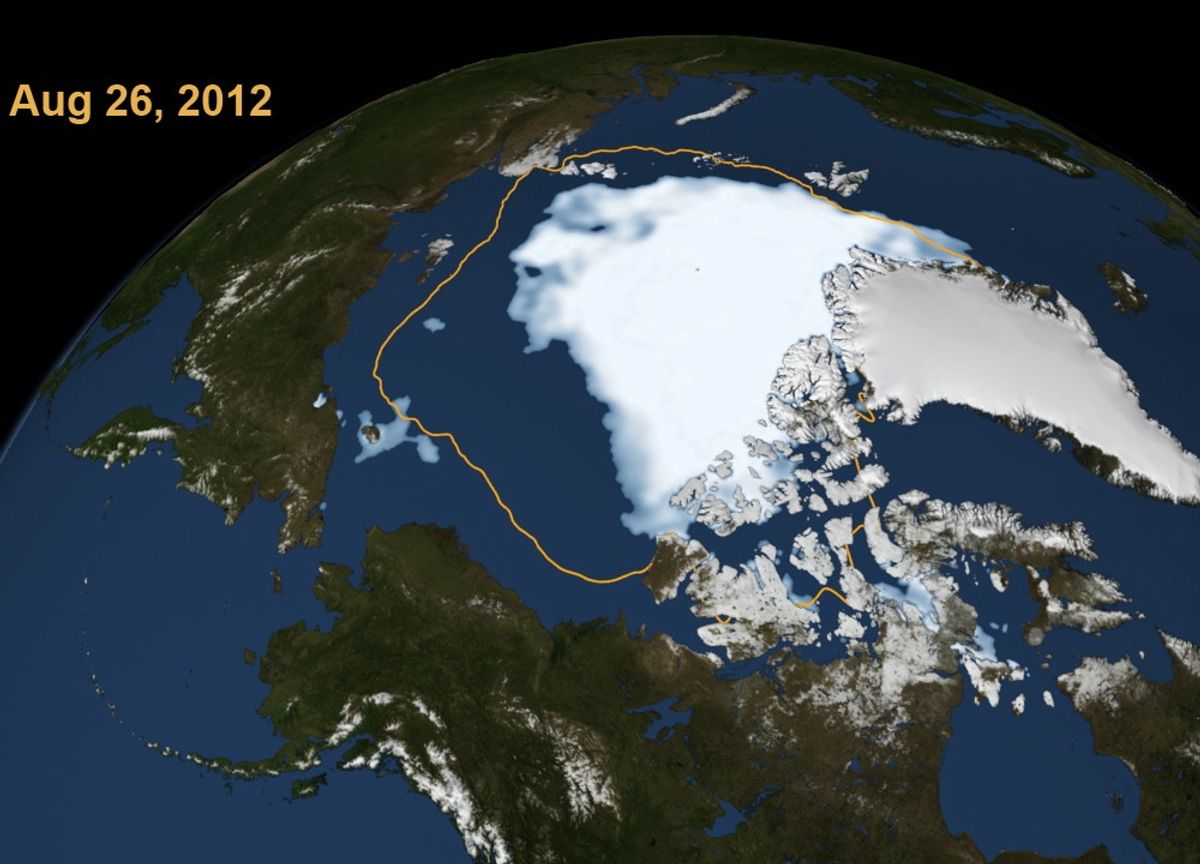Arctic sea ice melted to a dramatic new low this summer, smashing the previous record in 2007. Historically, about half of Arctic sea ice melts by mid-September, but by late August this year, about three-quarters of it was already gone.
The new record is a reminder that it won't be long before enough Arctic ice melts to allow tapping of the area's oil and natural gas reserves and shipping them—and anything else—across the fabled Northeast Passage. And when nations and corporations start competing for the area's riches, things will get complicated, according to a trio of reports in the Bulletin of the Atomic Scientists.
In the reports, authors from Russia, Canada and the U.S. estimate the potential implications of exploiting the Arctic in 2030. Chief among them are rights to its rich oil and natural gas reserves: The Arctic may hold about 13 percent of undiscovered oil and 30 percent of undiscovered natural gas. How that abundance will be divvied up is still under international negotiation. The United Nations Convention on the Law of the Sea (which goes back to 1982, though it has been updated, most recently in 2011) set some rules about how far from the coast a country's economic claims are valid. But the U.S. never signed onto the convention, and there is enough ambiguity in the rules to allow for dispute. Russia's opinion on the matter was made clear in 2007 when one of its submarines planted a Russian flag on the sea floor at the North Pole.
Corporations are already trying to tap some of the resources in the area, but face a difficult road. Shell Oil last year received permission from the U.S. government to drill in the Beaufort Sea north of Alaska. After being repeatedly stymied by regulatory hurdles, legal challenges, and geological setbacks, it began drilling its first well this week only to abandon the work after one day because of sea ice moving into the area.
An ice-free Arctic will also allow for new shipping routes across what's known as the Northeast Passage, which would link the North Atlantic to the northern Pacific. Countries that build the equipment and service industries to support shipping will have the upper hand. Russia already has the world's largest fleet of icebreakers--specialty ships designed to plow through icy waters--and recently budgeted for the construction of six more that will run on diesel or nuclear power.
This kind of international competition for the Arctic's resources will inevitably bring tension and the possibility for conflict, the authors of the reports say. The question is, how long do we have before Arctic ice melts enough each summer to make commerce a reality? We're certainly getting close. In 2007 researchers measured Arctic sea ice covering a record-breaking low of 4.17 million square kilometer (1.61 million square miles). That record was set on September 18 of that year. This year, by August 26, ice covered only 4.10 million square kilometers (1.58 million square miles), and will likely continue to melt through mid-September, according to the National Snow and Ice Data Center. The agency will release a full report of this year's melt season in early October.
Photo Credit: NASA
Video credit: National Snow and Ice Data Center
Emily Waltz is a features editor at Spectrum covering power and energy. Prior to joining the staff in January 2024, Emily spent 18 years as a freelance journalist covering biotechnology, primarily for the Nature research journals and Spectrum. Her work has also appeared in Scientific American, Discover, Outside, and the New York Times. Emily has a master's degree from Columbia University Graduate School of Journalism and an undergraduate degree from Vanderbilt University. With every word she writes, Emily strives to say something true and useful. She posts on Twitter/X @EmWaltz and her portfolio can be found on her website.



